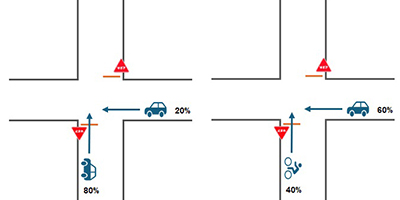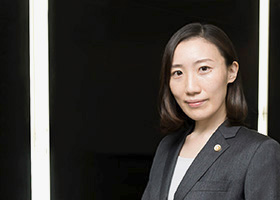Navigating Traffic Accidents in Japan: Legal Considerations (Part 2 – Compensation)
In our last post, we provided basic information regarding how to navigate through the process of being involved in a traffic accident in Japan. In this post, we’ll focus on traffic accident victims—the rights you have as a victim and ways to protectyourself.
1. What You Can Claim
Consider the following key points making you eligible for compensation:
• Property Damage: Reasonable repair expenses are compensated. Additionally, in some cases,
damages related to personal items such as clothes, bags and cell phone
can also be covered.
• Psychological Damage: Compensation for psychological damage (called Isharyō) is money intended
to address physical and emotional suffering resulting from a traffic accident
injury. The compensation amount depends on the type and duration of the
injury and frequency of treatment.
Important note: Medical records play a crucial role in proving suffering.
Seeking prompt medical attention and adhering to treatment recommendations
are essential. Not doing so can significantly reduce compensation. We strongly
recommend seeking legal advice immediately after an accident so that you
are adequately informed about risks while in treatment.
• Treatment Expenses: This includes medical bills, hospitalization costs, transportation expenses
and related fees.
• Lost Income: compensation for lost income is available if work is missed. In some cases,
a doctor’s note may be required.
• Residual Disability: After completing necessary treatments, individuals who continue to suffer
from the injury can apply for recognition of residual disability (Kōi Shōgai).
There are 14 degrees of disability (with one degree being the most severe).
The compensation for future damages varies based on the degree of recognition.
For our clients, we not only handle the application process but also strive
for optimal results. For instance, we prepare customized request letters
to doctors for their note (official Doctor’s Note) on the residual disability,
ensuring they focus on relevant symptoms, necessary tests and results.
You might assume doctors know about such things, but while they excel at
patient care, many are unaware of what residual disability recognition
entails.
2. Understanding Percentage of Negligence
When a traffic accident occurs in Japan, determining fault isn’t always
straightforward. Often, both parties—the victim and the at-fault driver—may
share some degree of responsibility. In such cases, the concept of “Percentage
of Negligence” (Kashitsu Wariai) comes into play. Here’s how it works:
• Definition: The “Percentage of Negligence” represents the proportion of responsibility
for an accident. It determines how compensation is distributed between
victims and at-fault parties. If you bear some degreeof responsibility
in an accident even though you are, in a general sense, the victim, your
compensation may be reduced based on your own percentage of negligence.
In some cases, you might even be required to pay for damages caused to
the other party (such as the repair fee of their car).
• Standard Reference: In most cases, designation of negligence percentages follows an official
standard based on legal precedents. Factors considered include the accident
site (e.g., intersection, intersection without traffic lights, arterial
road with pedestrian crossing), the type of vehicles involved (e.g., car
vs. car, car vs. bicycle, car vs.pedestrian), and the nature of the collision
(e.g., right-turn accident, disregard of a traffic light, rear-end collision).
• Examples: For example, if there is an accident at an intersection with no traffic
light but with a stop sign on one side: If it’s a car vs. car collision
(neither car stopped at the intersection), the standard negligence percentage
will be 80% for the car with the stop sign and 20% for the car without
the stop sign. The driver on the side with no stop sign might find it unreasonable
to be considered responsible for 20% of the accident, but this is the established
framework.
In the same accident, however, if it is a car vs. bicycle collision, and
the bicycle side has the stop sign, the negligence percentage becomes 60%
for the car and 40% for the bicycle. Despite the fact that the cyclist
wasthe one who should have followed the stop sign before entering theintersection,
they bear less negligence simply because they were on a bicycle.

Please note that other factors may change the percentage of negligence,
so consulting a professional is recommended. Some accidents simply do not
fall into any regular legal category in which case, the percentage will
be determined by negotiation or court decision.
3. Legal process
• Negotiation: Most traffic accidents are settled by negotiation. This is because there
are accumulated legal precedents that make it easy to anticipate the court’s
decision if the case goes to trial. So, both parties are usually willing
to settle for a little less than the expected amount of a court ruling
to avoid the trouble of going through the process of a trial.
However, insurance companies often offer significantly less to those negotiating
without legal representation. If you receive a settlement offer from the
insurance company, consider consulting with a lawyer before finalizing
it.
• Lawsuits: In some cases, such as when the injury is so severe that the compensation
demanded is high, settlement through negotiation becomes difficult. Victims
can then file a lawsuit against the responsible party. Keep in mind that
lawsuits typically take at least a year to resolve.
Remember that you have rights as a victim. Consulting a professional to
guide you through the legal process is key.
Our firm handles traffic accident cases from clients across Japan. We offer
online consultations, communicating via email and phone. Experiencing an
accident in a foreign country can be particularly traumatic. Our goal is
to provide you with legal guidance every step of the way.

Akemi Terano, Attorney at Law